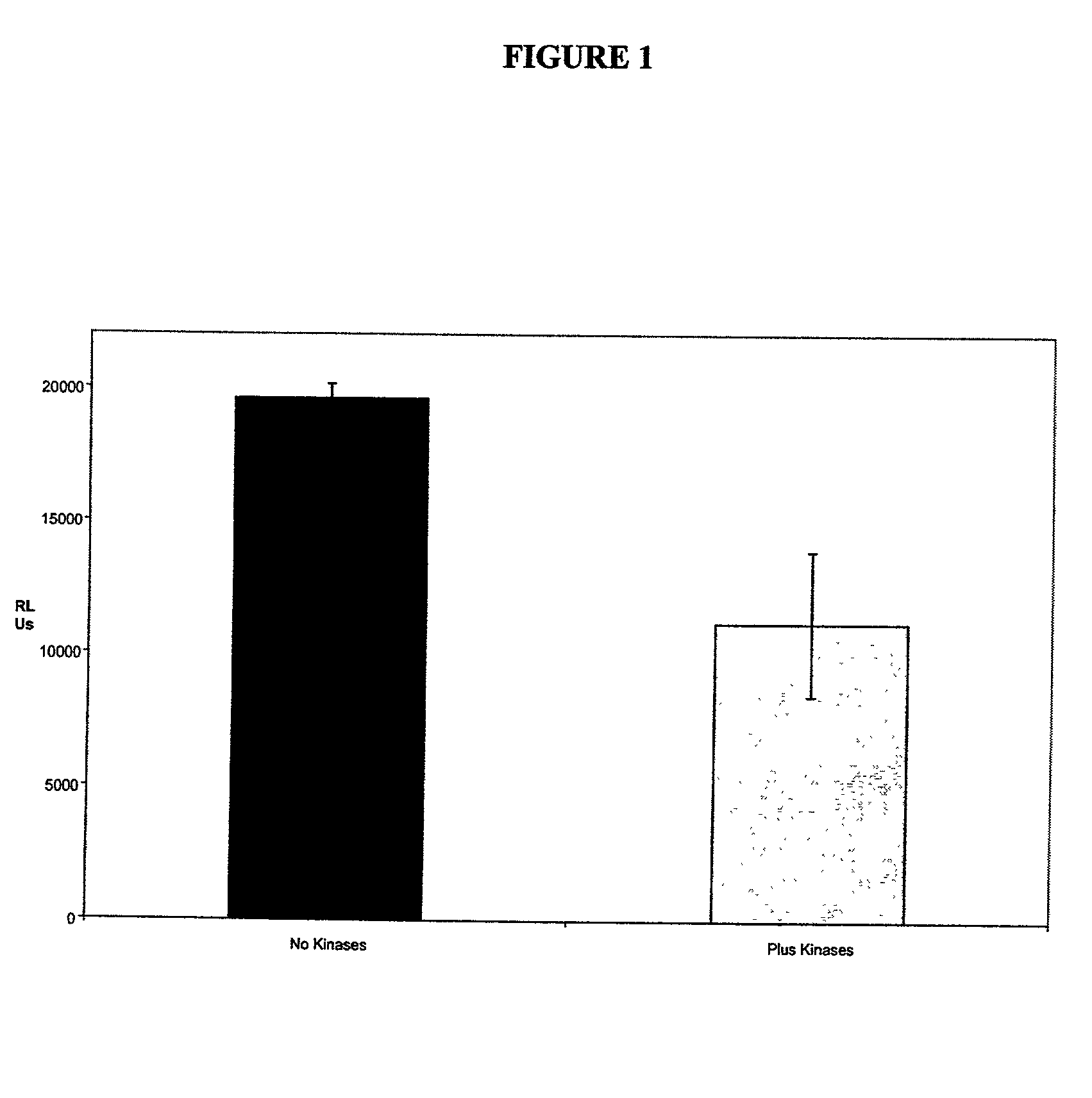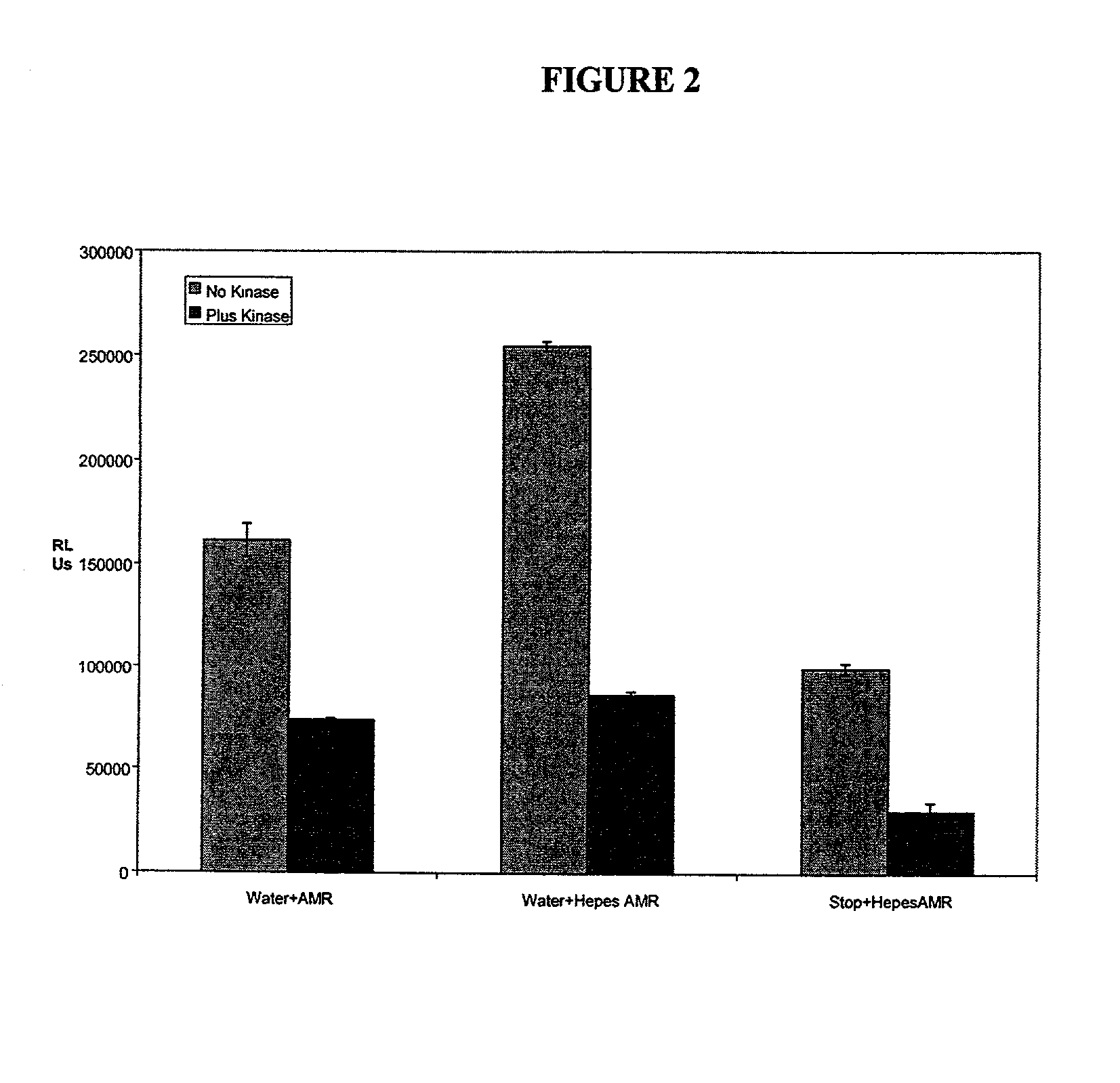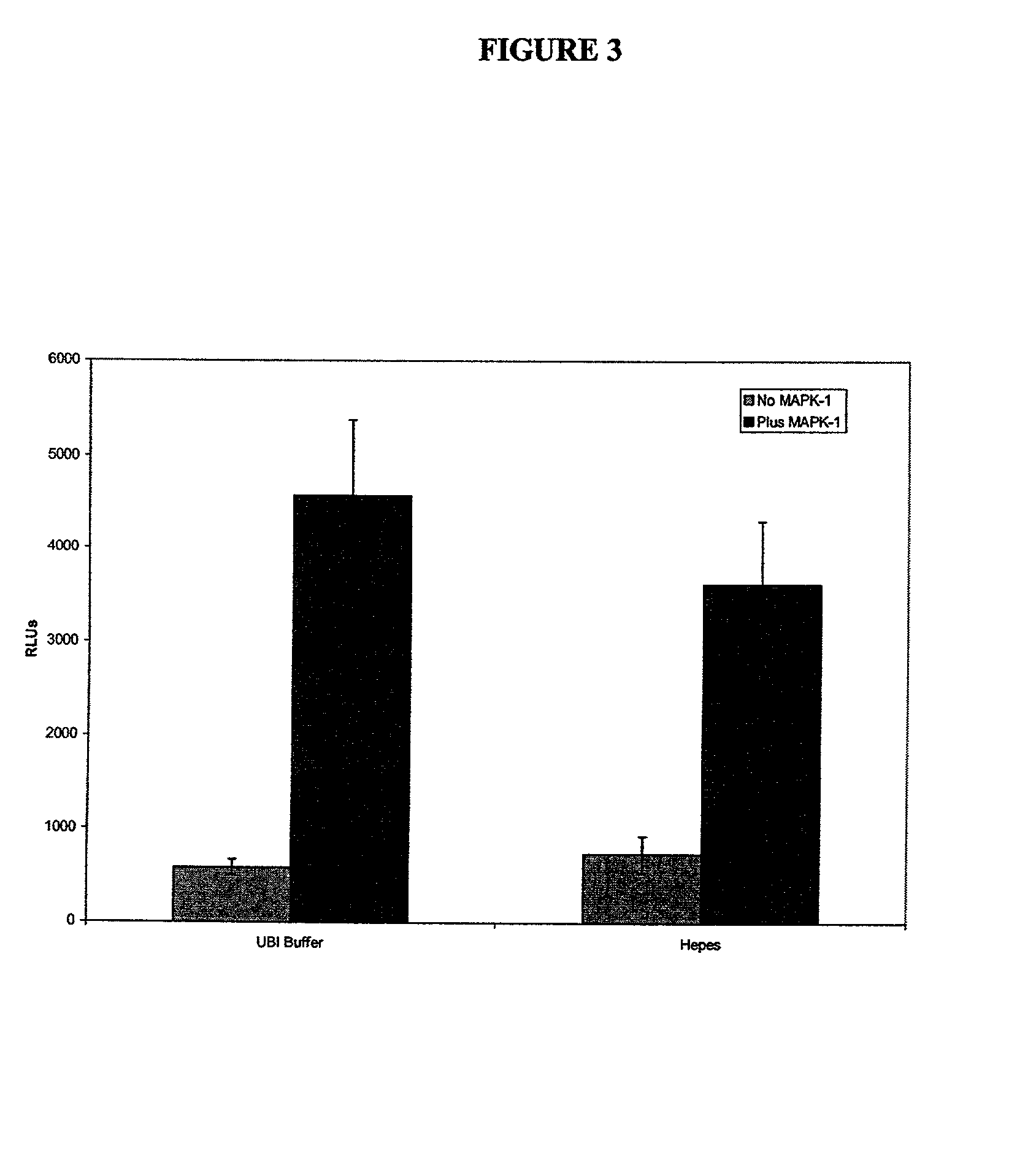Methods and kits for detecting protein kinases
a protein kinase and kit technology, applied in the field of protein kinase activity detection, can solve the problems of forming tumours, reducing requiring a lot of labor, so as to reduce the amount of atp, reduce the rate of signal decay, and reduce the activity of kinas
- Summary
- Abstract
- Description
- Claims
- Application Information
AI Technical Summary
Benefits of technology
Problems solved by technology
Method used
Image
Examples
example 1--
Determination of the Activity of JNK-1
[0100] The first set of experiments was to determine the activity of JNK-1 after the activation of this enzyme by two other kinases, MEKK1 and MKK4. The assay buffer used to activate the enzymes was made up as a 10 times stock (the formulation is shown in appendix 1). The assay was performed as follows, with an initial preparation of a pre-mix for JNK activation.
[0101] The JNK enzyme was used at a stock concentration of 1.234 mg / ml, MEKK1 at 1 mg / ml and MKK4 at 0.28 mg / ml. The activation mixture was added to a polypropylene tube (Sarstedt) with 8.7 .mu.l of JNK, 2.5 .mu.l of MEKK1, 8.4 .mu.l of MKK4, 1 .mu.l of 10 mM ATP (Calbiochem, UK), 1 .mu.l of dithiothreitol (Sigma, UK), 5 .mu.l of 10X assay buffer and 23.4 .mu.l of distilled water. This was incubated overnight at room temperature. To perform the actual assay, the 50 .mu.l of activated concentrate was diluted in 9 mls of JNK assay buffer at the working concentration (i.e. diluted 1:10). Th...
example 2--
Determination of the Activity of MAPK-1 / ERK-1
[0104] To confirm that monitoring of kinase activity by the above method of the invention would proceed with other enzymes that cleave the phosphate from ATP, we looked at a number of other kinases which are important in signal transduction and used as targets in drug discovery.
[0105] MAP Kinase-1 / ERK-1 activity was investigated in the presence of myelin basic protein as the phospho-acceptor. This enzyme was supplied in the active form from UBI at a stock concentration of 25 .mu.g in 250 .mu.l. Briefly, 10 .mu.l of assay dilution buffer (UBI, see appendix 1 for formulation) was added to triplicate wells of a white-walled 96 well microtitre plate (Dynex). To this was added 10 .mu.l of MAPK1 and 10 .mu.l of myelin basic protein (UBI, 2 mg / ml), plus 10 .mu.l of ATP cocktail (UBI, for formulation see appendix 1). The plate was sealed and the reaction was allowed to proceed for 10 minutes at 30.degree. C. After this time 110 .mu.l of either as...
example 3--
Determination of the Activity of MAPK-2 / ERK-2
[0107] The above protocol was also used for determining the effect of MAPK-2 / ERK-2 in the presence of the same substrate, myelin basic protein. The MAPK-2 was supplied by UBI at a concentration of 2.5 .mu.g of enzyme in 25 .mu.l of buffer (for formulation see appendix 1), with a specific activity of 662.5 U / mg, where 1U=1 nmole of phosphate incorporated into myelin basic protein. This enzyme was compared with the inactive form, also supplied by UBI at a concentration of 12.5 .mu.g in 50 .mu.l. Both enzymes were diluted in UBI assay dilution buffer to allow for the addition of 25 ng of protein in 10 .mu.l to each well. The myelin basic protein was added as described in the above example, and 200 mM Hepes was used as the buffer added to the wells prior to the addition of the ATP monitoring reagent. The assay was performed in triplicate wells and showed RLUs of 10075.+-.339 for the inactive enzyme, which was very similar to the light output ...
PUM
 Login to View More
Login to View More Abstract
Description
Claims
Application Information
 Login to View More
Login to View More - R&D
- Intellectual Property
- Life Sciences
- Materials
- Tech Scout
- Unparalleled Data Quality
- Higher Quality Content
- 60% Fewer Hallucinations
Browse by: Latest US Patents, China's latest patents, Technical Efficacy Thesaurus, Application Domain, Technology Topic, Popular Technical Reports.
© 2025 PatSnap. All rights reserved.Legal|Privacy policy|Modern Slavery Act Transparency Statement|Sitemap|About US| Contact US: help@patsnap.com



